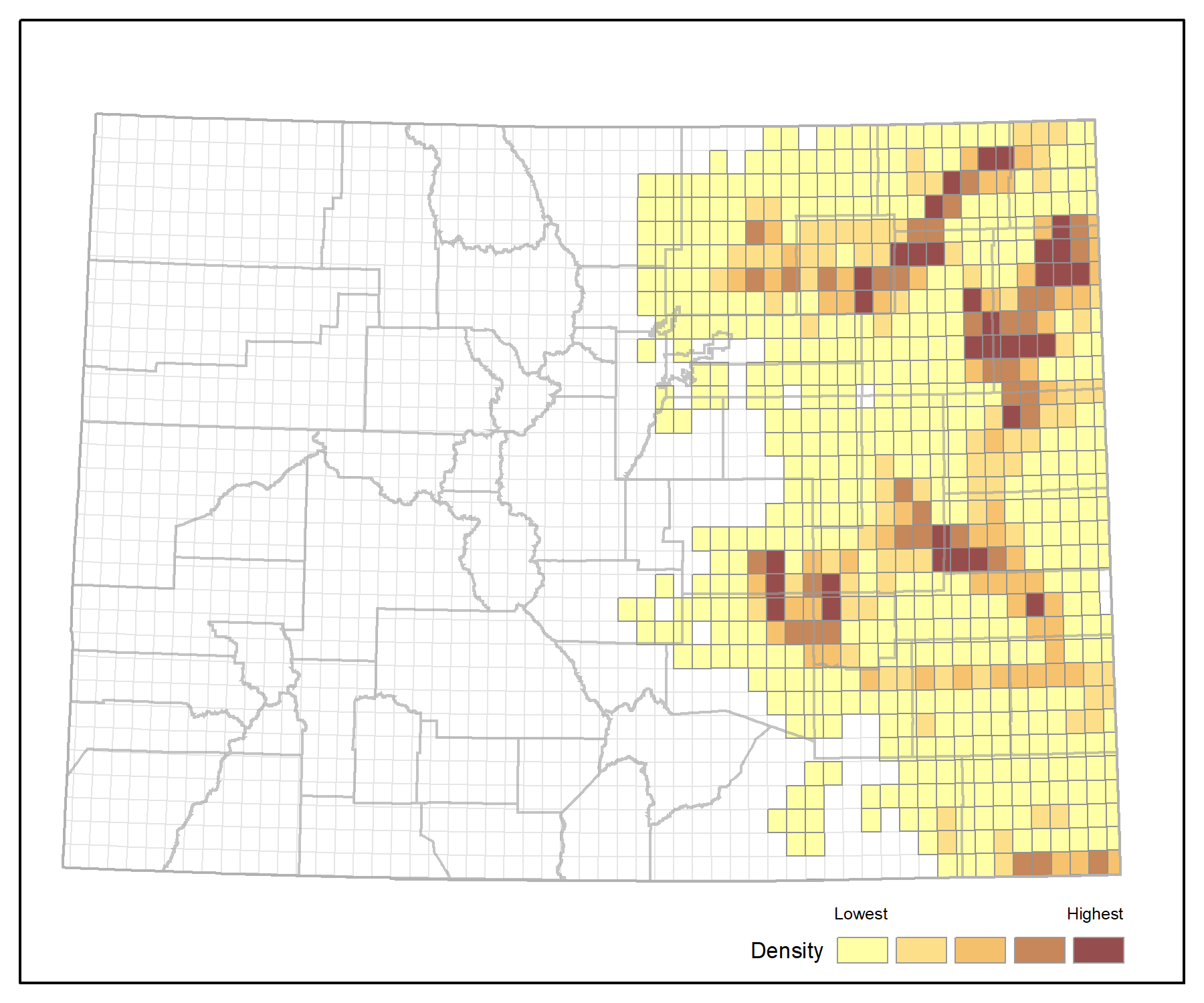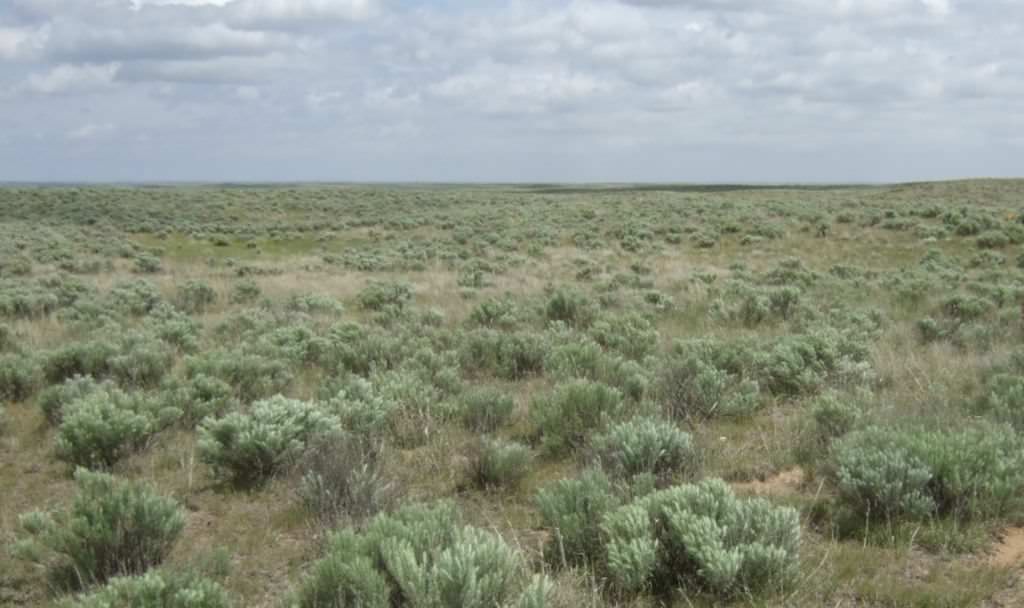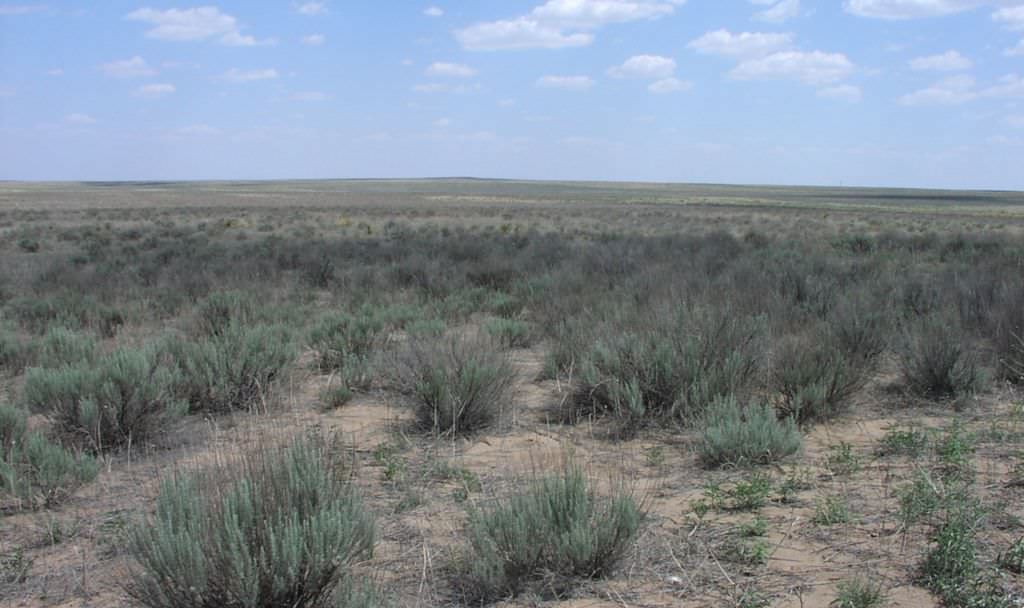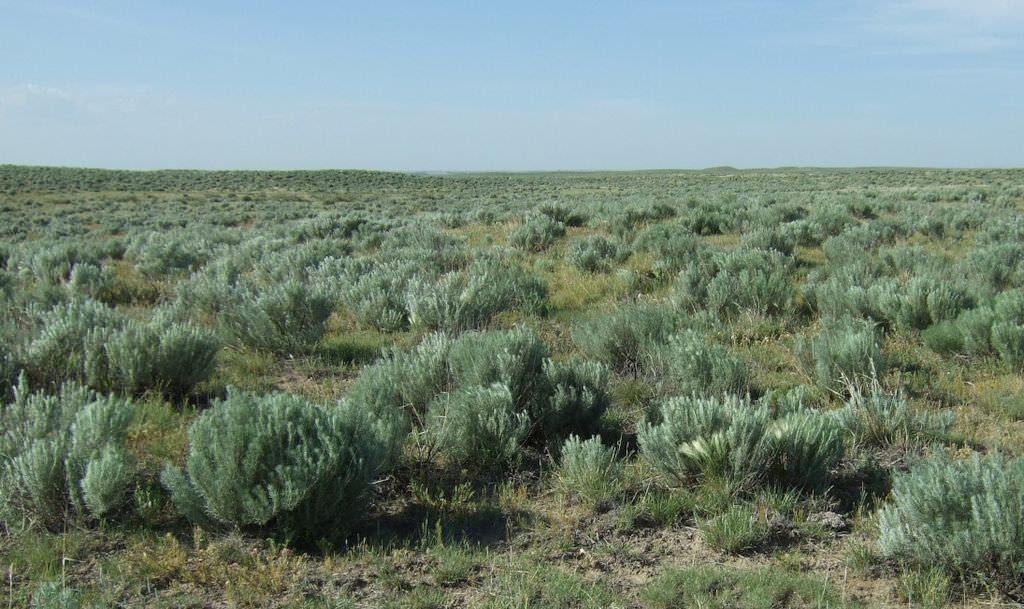Western Great Plains Sandhill Steppe
Click link below for details.
General Description
This shrub-steppe system is found primarily in the south-central areas of the western Great Plains. Occurrences range from southeastern Wyoming and adjacent southwestern Nebraska south of the Nebraska Sandhills south through eastern Colorado and New Mexico to north-central Texas. The greater part of the system occurs in the Central Shortgrass Prairie Ecoregion in eastern Colorado, western Kansas and southwestern Nebraska. In eastern Colorado, this system is found in extensive tracts on sandy soils of Quaternary eolian deposits along the South Platte, Arikaree and Republican Rivers, between Big Sandy and Rush Creeks, and along the Arkansas and Cimarron Rivers, where it is contiguous with areas in Kansas. Elevations are generally below 1,680 m (5,500 ft). These open shrublands are characterized by a sparse to moderately dense woody layer dominated by sand sagebrush (Artemisia filifolia), and are sometimes called sandsage prairie. Soapweed yucca (Yucca glauca), broom snakeweed (Gutierrezia sarothrae), or pricklypear (Opuntia spp.) are common subshrubs in many areas. Gramminoids are generally dominant, and include sand bluestem (Andropogon hallii), blue grama (Bouteloua gracilis), sideoats grama (Bouteloua curtipendula), prairie sandreed (Calamovilfa longifolia), needle-and-thread (Hesperostipa comata), little bluestem (Schizachyrium scoparium), sand dropseed (Sporobolus cryptandrus), and threeawn (Aristida spp.).
Diagnostic Characteristics
Western Great Plains Sandhill Steppe is characterized by sandy soils supporting open shrublands dominated by sand sagebrush.
Similar Systems
No other systems in Colorado are similar to sandhill steppe, although stands may be embedded within a variable shortgrass prairie matrix that shares some species. The sandhill prairie of Nebraska is also found on sandy soils, but does not reach into Colorado.
Range
Occurrences range from southeastern Wyoming and adjacent southwestern Nebraska south of the Nebraska Sandhills south through eastern Colorado and New Mexico to north-central Texas. The greater part of the system occurs in the Central Shortgrass Prairie Ecoregion in eastern Colorado, western Kansas and southwestern Nebraska. In eastern Colorado, this system is found in extensive tracts on sandy soils of Quaternary eolian deposits along the South Platte, Arikaree and Republican Rivers, between Big Sandy and Rush Creeks, and along the Arkansas and Cimarron Rivers, where it is contiguous with areas in Kansas.
Ecological System Distribution

Spatial Pattern
Western Great Plains Sandhill Steppe is a large patch forming ecological system.
Environment
Throughout its range Western Great Plains Sandhill Steppe is closely tied to sandy soils. This system, however, is likely to intergrade closely with shortgrass prairie, perhaps forming a locally patchy sandsage/shortgrass matrix, and therefore it may be difficult to delimit as a distinct ecological system in places. Little is known about the tolerance of sandsage for soils other than well-drained sand with a low silt and clay component. Such soils are often "droughty, with reduced water-holding ability, and consequently, the potential for increased water stress to resident plants
Sandsage shares the dry and warm climate of shortgrass. Annual average precipitation is on the order of 25-47 cm (10-18 in), with a mean of 40 cm (16 in). The growing season is generally long, with frequent high temperatures. Colorado's eastern plains exhibit climatic differences from north to south which may be reflected in the local expression of sandsage prairie. Occurrences in southern Colorado experience a longer growing season, lower annual precipitation, and differences in precipitation patterns, and may be dominated by different species than northern stands.
Vegetation
This system is characterized by a sparse to moderately dense woody layer dominated by individual sandsage (Artemisia filifolia) shrubs. The intervening ground is most often dominated by a sparse to moderately dense layer of tall, mid- or short grasses. Graminoid species such as sand bluestem (Andropogon hallii), threeawn (Aristida spp.), grama (Bouteloua spp.), prairie sandreed (Calamovilfa longifolia), needle-and-thread (Hesperostipa comata), and sand dropseed (Sporobolus cryptandrus) are typical. Other shrub species may also be present including tree cholla (Cylindropuntia imbricata), broom snakeweed (Gutierrezia sarothrae), pricklypear (Opuntia spp.), western sandcherry (Prunus pumila var. besseyi), and soapweed yucca (Yucca glauca).
- CEGL001467 Andropogon hallii - Calamovilfa longifolia Grassland
- CEGL001466 Andropogon hallii - Carex inops ssp. heliophila Grassland
- CEGL001459 Artemisia filifolia / Andropogon hallii Shrubland
- CEGL002176 Artemisia filifolia / Bouteloua (curtipendula, gracilis) Shrubland
- CEGL001473 Calamovilfa longifolia - Hesperostipa comata Grassland
Associated Animal Species
Greater and Lesser Prairie-Chicken (Tympanuchus cupido and T. pallidicinctus), Cassin's sparrows (Peucaea cassinii), and ornate box turtles (Terrapene ornata ornata) are indicators of a healthy sandsage system. Bullsnake (Pituophis catenifer), racer (Coluber constrictor), prairie rattlesnake (Crotalus viridis) are common; longnosed snake (Rhinocheilus lecontei), and Texas horned lizard (Phrynosoma cornutum,) are inhabitants of some sandsage areas of south of Arkansas River in southeastern Colorado. Yellow mud turtle (Kinosternon flavescens), plains leopard frog (Lithobates blairi), and northern cricket frog (Acris crepitans) can be found in moist areas within the sandhill steppe. Ord's kangaroo rat (Dipodomys ordii) is a typical burrower in sandy areas.
Dynamic Processes
The incidence of drought accompanied by higher temperatures is a key determinant of the extent of sand dune activation in the Great Plains. The extensive eolian sand deposits of the Great Plains, although at present largely stabilized by vegetation, are a sensitive indicator of climate trends. During the past 10,000 years, these areas are likely to have fluctuated between active dune fields and stabilized, vegetated dunes, depending on climate and disturbance patterns. Extended periods of severe drought or other disturbance that results in loss of stabilizing vegetation can quickly lead to soil movement and blowouts that inhibit vegetation re-establishment, and may eventually lead to dramatically different species composition.
Drought is the most important extreme event that is likely to alter the character of these shrublands. Warmer and drier conditions, and resulting reduced vegetation cover could allow reactivation of currently stabilized sandy soils throughout eastern Colorado. Although sandsage does not reproduce vegetatively, it is able to resprout after fire. Fire extent and intensity are correlated with climate and grazing effects on fuel loads. Fire and grazing are both important disturbance processes for sandsage habitat, and may interact with drought, as well as permitting invasive exotic plant species to establish and spread.
Management
Occurrences in Colorado are significantly impacted by anthropogenic activities. In some cases this has increased the extent of sandsage shrubland if midgrass prairie is converted to shortgrass-sandsage community, due in large part to long-term continuous grazing by domestic livestock. Many areas are now lacking the diversity and interspersion of patch types that provides ideal habitat for species such as the Lesser Prairie Chicken. Sandsage shrublands have limited but ongoing threat of conversion to tilled agriculture or urban/exurban and commercial development. Oil and gas development, and wind turbine farms, with associated roads, utility corridors, and infrastructure is a primary ongoing source of anthropogenic disturbance, fragmentation, and loss in this habitat.
Extended periods of drought that decrease levels of vegetation cover would increase the likelihood that sandy substrates will be mobilized. The loss of native plant biodiversity in many stands decreases the available assemblage of drought-adapted species that can boost resilience to this vulnerability. Sandsage shrublands are moderately vulnerable to the effects of climate change by mid-century, primarily due to the concentration of greatest exposure for all temperature variables on the eastern plains of Colorado, where this ecosystem is found. In addition, anthropogenic disturbance in these shrublands has reduced the overall landscape condition of the habitat. These shrublands are well adapted to sandy soils, and may be able to expand into adjacent areas under warmer, drier conditions, depending on disturbance interactions. Overall condition and composition of these shrublands may change with changing climate.
References
- Daley, R.H. 1972. The native sand sage vegetation of eastern Colorado. Unpublished thesis at Colorado State University. 62pp.
- Forman, S.L., R. Oblesby, and R.S. Webb. 2001. Temporal and spatial patterns of Holocene dune activity on the Great Plains of North America: megadroughts and climate links. Global and Planetary Change 29:1-29.
- Muhs, D.R. and P.B. Maat. 1993. The potential response of eolian sands to greenhouse warming and precipitation reduction on the Great Plains of the U.S.A. Journal of Arid Environments 25:351-261.
- Ramaley, F. 1939. Sand-hill vegetation of northeastern Colorado. Ecological Monographs 9:1-51.
- Wright, H.A. and A.W. Bailey. 1982. Fire ecology: United States and southern Canada. John Wiley and Sons. New York. 501 p.









